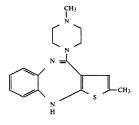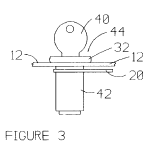 Rhodia Chimie v. PPG Industries Inc., (Fed. Cir. 2005)
Rhodia Chimie v. PPG Industries Inc., (Fed. Cir. 2005)
By Baltazar Gomez, Ph.D.
Rhodia is an international chemical company and the assignee of U.S. Pat. No. 6,013,234 (“the ‘234 patent”). The patent discloses and claims certain essentially spheroidal precipitated silica particulates. Rhodia markets “Micropearl” which is a silica particulate covered by the patent. PPG also makes three silica products, namely, Hi-Sil SC60M, SC72 and SC72C. Rhodia alleges that these products infringe claim 1 of the ‘234 patent.
The district court granted summary judgment for noninfringement in favor of PPG. On appeal, Rhodia argued that the district court erred in interpreting claim 1. The CAFC, however, affirmed the district court’s construction.
Claim 1 of the ‘234 patent partly reads as follows: Dry, dust-free and non-dusting, solid and homogeneous atomized precipitated silica particulates essentially spheroidal in geometrical configuration… (emphasis added)
In addition, the specification included examples tested both for flowability and dusting properties. Flowablity tests were performed by a pour test which compared the flowability of Micropearl with the prior art. The dusting tests were measured by the German DIN 53 583 standard (the “DIN test”).
During the district court’s claim construction hearing, PPG asserted that the phrase “dust-free and non-dusting” should be interpreted literally to mean “no dust cloud whatsoever.” Conversely, Rhodia argued that such a meaning was improper in view of the results of the pour test that showed production of some dust. Accordingly, Rhodia advocated construing “dust-free and non-dusting” to mean “very low dust.”
The district court was concerned, however, that Rhodia’s proposed definition of the phrase was relative and that such a definition would not meet the statutory requirement that the claims particularly point out and distinctly claim the invention. Thus, to resolve the perceived ambiguity of the phrase, the district court adopted a construction based upon the only meaningful guidance provided in the patent, namely the DIN test.
On appeal, Rhodia argued that the DIN test was not the only means by which to assess the amount of dust produced by the invention. Rhodia asserted that the pour test could also be used to determine the level of dustiness, and therefore, it is inappropriate for the district court to limit the phrase “dust-free and non-dusting” to the DIN test. Further, Rhodia cited statements made during prosecution of the ‘234 patent explaining that the pour test could be used to show the non-dusting and free-flowing properties of the ‘234 patent.
In affirming the district court’s construing of “dust-free and non-dusting”, CAFC noted that although the pour test may also provide evidence of dustiness, the results of the pour tests presented in the ‘234 patent were only identified as evidence of the products’ flowability. The CAFC further noted that there is no language in either the claims or the written description that taught the application of the pour test to determine the level of dustiness. Finally, CAFC stated that Rhodia’s statements made during prosecution cannot serve to fill such a gap. Thus, the CAFC concluded that the district court did not erred in limiting the scope of the claims by defining the phrase “dust-free and non-dusting” to the only disclosure in the patent.
Note: Dr. Baltazar Gomez is a scientific advisor at McDonnell Boehnen Hulbert & Berghoff LLP in Chicago. Dr. Gomez obtained his PhD in biochemistry from the University of Texas and researched retrovirology as a PostDoc at Cornell University.
File Attachment: Chimie v. PPG.pdf (98 KB)

 Eli Lilly v. Zenith Goldline (N.D. Ill. 2005).
Eli Lilly v. Zenith Goldline (N.D. Ill. 2005).  In her most recent patent opinion, Northern District of Illinois Judge Joan Lefkow took both parties to task for their failure to comply with “the straightforward Local Rules of the U.S. District Court for the Northern District of Illinois.”
In her most recent patent opinion, Northern District of Illinois Judge Joan Lefkow took both parties to task for their failure to comply with “the straightforward Local Rules of the U.S. District Court for the Northern District of Illinois.” Bowling v. Hasbro (Fed. Cir. 2005) (04–1364).
Bowling v. Hasbro (Fed. Cir. 2005) (04–1364).  Rhodia Chimie v. PPG Industries Inc., (Fed. Cir. 2005)
Rhodia Chimie v. PPG Industries Inc., (Fed. Cir. 2005)  Apotex v. Pfizer (Fed. Cir. 2005) (NONPRECEDENTIAL)
Apotex v. Pfizer (Fed. Cir. 2005) (NONPRECEDENTIAL)
 In the CAFC’s April 8 decision of SmithKline Beecham v. Apotex, the en banc panel vacated the original appellate court’s opinion relating to the experimental use exception to the public use bar of 102(b). The lower court had, somewhat controversially, found that experimental use may only be used to negate a 102(b) public use if the purpose of the experimental use was to assist in designing or testing of a claimed feature. Thus, because the “clinical trials tested only the safety and efficacy of PHC hemihydrate as an anti-depressant,” the original appellate panel found that those trials were not an experimental use of the chemical compound as claimed in claim 1.
In the CAFC’s April 8 decision of SmithKline Beecham v. Apotex, the en banc panel vacated the original appellate court’s opinion relating to the experimental use exception to the public use bar of 102(b). The lower court had, somewhat controversially, found that experimental use may only be used to negate a 102(b) public use if the purpose of the experimental use was to assist in designing or testing of a claimed feature. Thus, because the “clinical trials tested only the safety and efficacy of PHC hemihydrate as an anti-depressant,” the original appellate panel found that those trials were not an experimental use of the chemical compound as claimed in claim 1. In what may be rival as the swiftest justice in the history of the Court of Appeals for the Federal Circuit. On April 8, only two days after hearing oral arguments, the CAFC rejected Smuckers appeal. The case, in re Kretchman, was widely covered media and involved Smuckers attempt to obtain a broad patent on its Uncrustables(TM).
In what may be rival as the swiftest justice in the history of the Court of Appeals for the Federal Circuit. On April 8, only two days after hearing oral arguments, the CAFC rejected Smuckers appeal. The case, in re Kretchman, was widely covered media and involved Smuckers attempt to obtain a broad patent on its Uncrustables(TM). 
 IP Law Bulletin has a nice
IP Law Bulletin has a nice  Several months ago, I implemented an e-mail newsletter to provide updates to the Patently-O patent law blog. Like the blog, the newsletter is free. List members receive a daily e-mail (usually between 1 and 4 a.m. EST) that contains any new articles from the previous 24 hours. By all accounts, the newsletter is a smashing success — one reader recently wrote in that she loves reading Patently-O every morning. “I don’t drink coffee,” she writes, “so you are my caffeine kick.”
Several months ago, I implemented an e-mail newsletter to provide updates to the Patently-O patent law blog. Like the blog, the newsletter is free. List members receive a daily e-mail (usually between 1 and 4 a.m. EST) that contains any new articles from the previous 24 hours. By all accounts, the newsletter is a smashing success — one reader recently wrote in that she loves reading Patently-O every morning. “I don’t drink coffee,” she writes, “so you are my caffeine kick.” If you have not yet signed up, why not give it a try today? If you decide that you do not like getting the e-mail, you can unsubscribe quite easily. Each daily e-mail includes an “unsubscribe” link. All that you have to do is click on the link and your subscription will be canceled.
If you have not yet signed up, why not give it a try today? If you decide that you do not like getting the e-mail, you can unsubscribe quite easily. Each daily e-mail includes an “unsubscribe” link. All that you have to do is click on the link and your subscription will be canceled.  In re Ciprofloxacin Hydrochloride Antitrust Litigation (E.D.N.Y. March 31, 2005)
In re Ciprofloxacin Hydrochloride Antitrust Litigation (E.D.N.Y. March 31, 2005) On April 6 at 2:00 pm, Judges Clevenger, Gajarsa & Prost will hear in re Kretchman (Case No. 04–1448) that involves peanut butter and jelly sandwich technology. Smuckers has already received one patent on its highly profitable “
On April 6 at 2:00 pm, Judges Clevenger, Gajarsa & Prost will hear in re Kretchman (Case No. 04–1448) that involves peanut butter and jelly sandwich technology. Smuckers has already received one patent on its highly profitable “